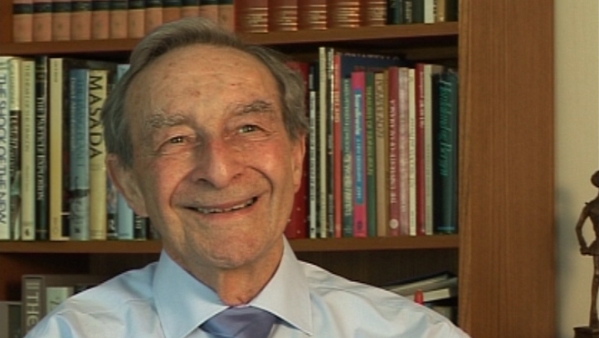NEXT STORY

The expansion of sciences at Newcastle University
RELATED STORIES

NEXT STORY

The expansion of sciences at Newcastle University
RELATED STORIES



Okay, so after that pleasant interlude I was back again to my family and the research lab in Nottingham, and there’s one other piece of work which I want to mention before leaving Nottingham and that concerns boron hydrides, which are very reactive species. And I was concerned that a lot of work was being done in America, at this time, as potential rocket fuels in fact, and I was being supported by the United States Air Force to do research on whatever subjects I wanted. But what I was working on was actually aluminium hydrides and gallium hydrides, and then boron hydrides. The work was difficult because there wasn’t much modern work in the literature, except for some work which was being done in Germany, and the Americans, for perhaps understandable reasons, were cagey to say how they were making the compounds. But I had one or two students start work in that area and on the gallium hydride complexes and, at this stage, I got my first post-doctoral fellow, who was Malcolm Wallbridge. He’d come to me from Leon Long in Exeter and had spent a time in the States, and he came in 1970 to join the group and we started the hydride group there. Unfortunately for him and, particularly, his wife who was particularly unhappy about it, I then got a call to go to Newcastle, to the newly established Chair of Inorganic Chemistry, so virtually the whole of our group moved up, with their families – if they were married – to Newcastle at that time. So that was the end of my period in Newcastle… in, I’m saying that again, but in Nottingham. And it was time to go to Newcastle.
Norman Greenwood (1925-2012) was born in Australia and graduated from Melbourne University before going to Cambridge. His wide-ranging research in inorganic and structural chemistry made major advances in the chemistry of boron hydrides and other main-group element compounds. He also pioneered the application of Mössbauer spectroscopy to problems in chemistry. He was a prolific writer and inspirational lecturer on chemical and educational themes, and held numerous visiting professorships throughout the world.
Title: The last of my work in hydrides at Nottingham
Listeners: Brian Johnson
Professor Brian FG Johnson FRS, FRSE, FRS Chem, FAcad Eu, FAS. Professor of Inorganic Chemistry University of Edinburgh 1991-1995, Professor of Inorganic Chemistry University of Cambridge 1995-2005, Master Fitzwilliam College Cambridge 1999-2005. Research interests include studies of transition metal carbonyls, organometallic chemistry, nano- particles and homogeneous catalysis. Professor Johnson is the author of over 1000 research articles and papers.
Tags: Nottingham University, USA, United States Air Force, Germany, Leon Long, Exeter, 1970, Newcastle, Malcolm Wallbridge
Duration: 2 minutes, 16 seconds
Date story recorded: May 2011
Date story went live: 25 November 2011